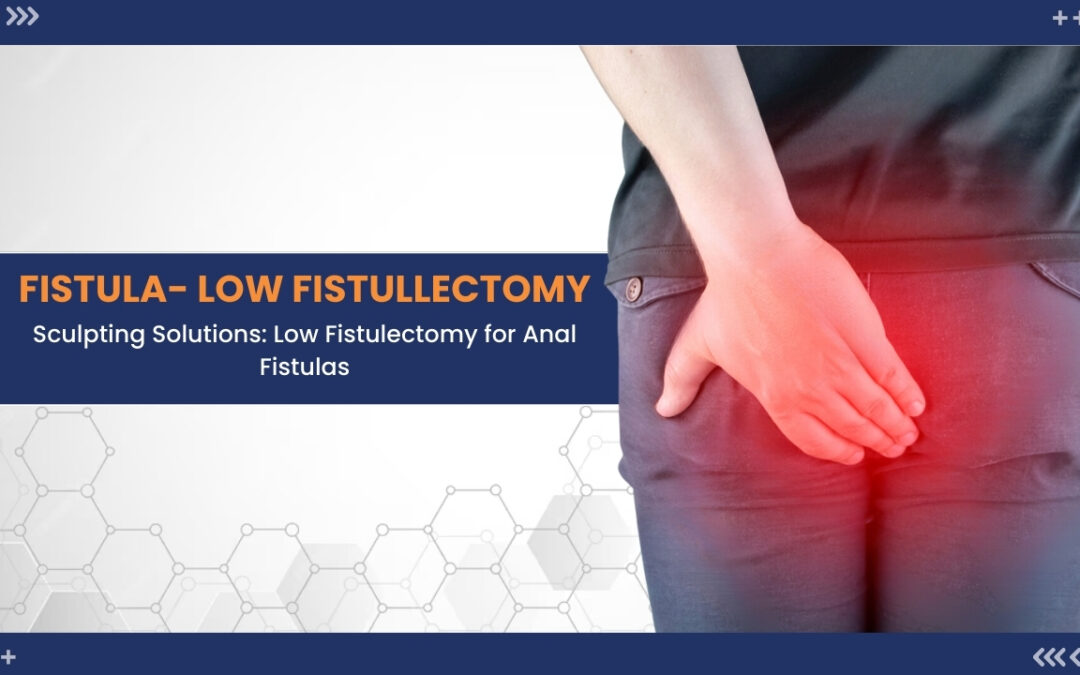Are you facing the prospect of a Low Fistulectomy and seeking guidance on what to expect? Look no further! Our comprehensive guide covers everything you need to know about this surgical procedure, from understanding the diagnosis to post-operative care and recovery.
Understanding Low Fistulectomy:
A Low Fistulectomy is a surgical procedure performed to treat a fistula near the lower part of the body, typically in the rectal or anal area. This condition can cause discomfort, pain, and recurrent infections, making surgical intervention necessary for relief.
Diagnosis and Evaluation:
Before undergoing a Low Fistulectomy, thorough diagnosis and evaluation are essential. Your healthcare provider will conduct a physical examination, possibly including imaging studies such as MRI or ultrasound, to assess the extent and location of the fistula. This evaluation helps determine the most appropriate treatment approach for your specific case.
Surgical Procedure:
During a Low Fistulectomy, the surgeon makes an incision near the fistula to remove it completely. The area is then cleaned and, in some cases, drained to promote healing. Depending on the complexity of the fistula, additional procedures such as fistulotomy or fistulectomy with seton placement may be performed to ensure comprehensive treatment.
Recovery and Post-Operative Care:
Following a Low Fistulectomy, proper post-operative care is crucial for promoting healing and preventing complications. This may include keeping the surgical site clean and dry, taking prescribed medications for pain and infection prevention, and attending follow-up appointments with your healthcare provider for monitoring and wound care.
Potential Complications and Long-Term Management:
While Low Fistulectomy is generally safe and effective, there are potential risks and complications to be aware of, including infection, bleeding, and recurrence of the fistula. To minimize these risks, it’s essential to follow your healthcare provider’s instructions carefully and maintain good hygiene practices.
Lifestyle Changes and Prevention Strategies:
In addition to surgical treatment, certain lifestyle changes and preventive measures can help reduce the risk of developing a fistula or experiencing recurrence. These may include maintaining good hygiene, avoiding constipation, and adopting a healthy diet rich in fiber and fluids to promote regular bowel movements.
Discover the Benefits of Low Fistulectomy:
Are you ready to say goodbye to the pain, discomfort, and inconvenience caused by a persistent fistula? A Low Fistulectomy offers numerous benefits that can significantly improve your quality of life.
1. Pain Relief: By removing the fistula and addressing the underlying cause, a Low Fistulectomy provides effective pain relief, allowing you to enjoy daily activities without constant discomfort.
2. Improved Healing: With proper surgical intervention and post-operative care, the surgical site can heal properly, reducing the risk of infection and promoting faster recovery.
3. Enhanced Comfort: Say goodbye to the inconvenience and embarrassment of dealing with recurrent fistula-related symptoms. A Low Fistulectomy can restore comfort and confidence in your daily life.
4. Prevention of Complications: Left untreated, a fistula can lead to complications such as infection, abscess formation, and even bowel obstruction. By undergoing a Low Fistulectomy, you can prevent these complications and safeguard your long-term health.
5. Restored Quality of Life: Regain control over your health and well-being with a Low Fistulectomy. Enjoy the freedom to live your life to the fullest, without the limitations imposed by a persistent fistula.
Ready to experience the life-changing benefits of a Low Fistulectomy? Consult with your healthcare provider today to explore your treatment options and take the first step towards a brighter, pain-free future.
Conclusion:
In conclusion, a Low Fistulectomy can offer relief and improved quality of life for individuals suffering from a fistula near the lower part of the body. By understanding the diagnosis, undergoing appropriate treatment, and following recommended post-operative care and preventive measures, you can take control of your health and well-being. Consult with your healthcare provider to discuss your options and embark on the path towards healing and recovery.


